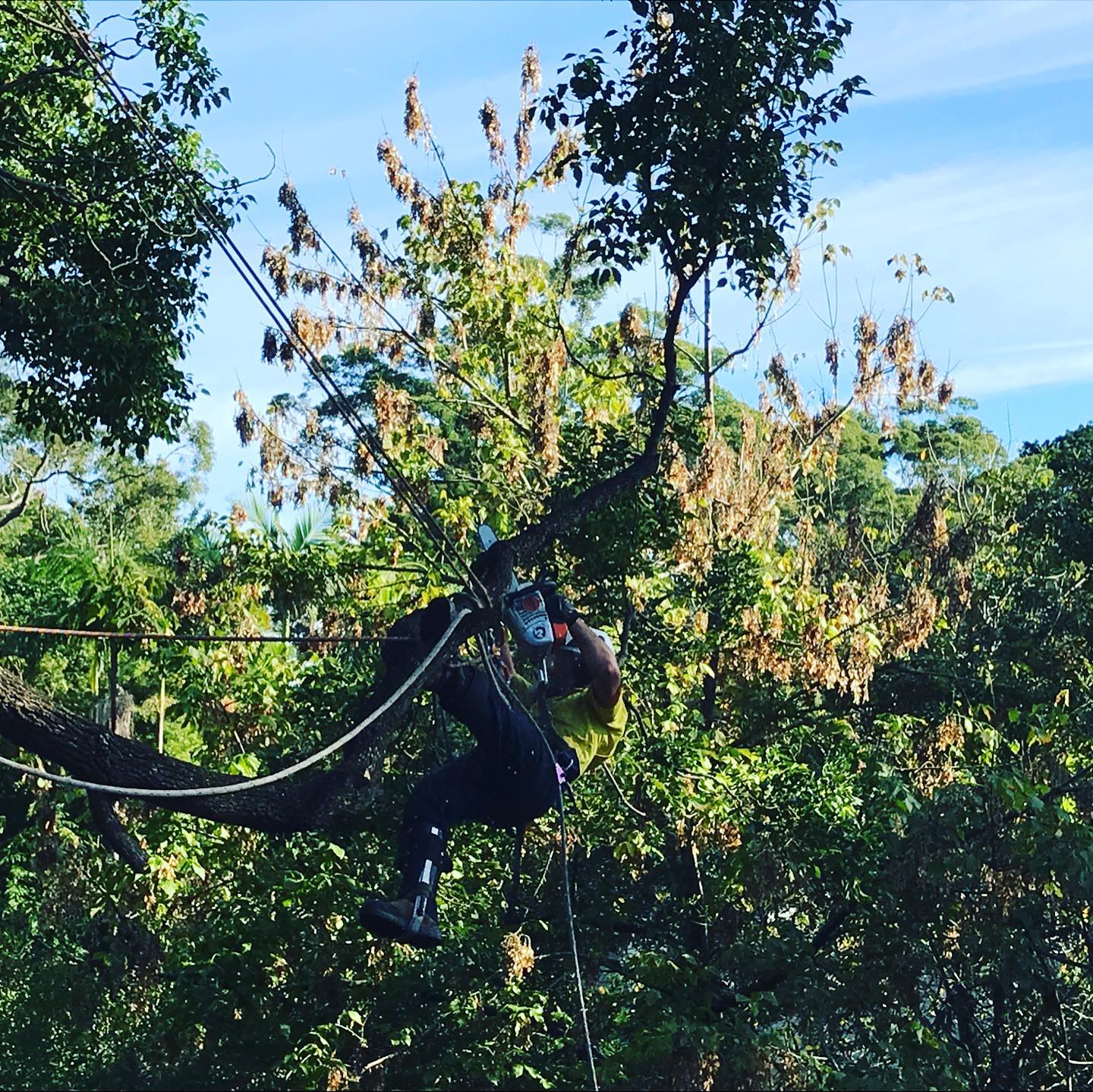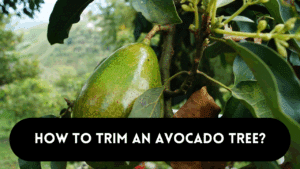If you’ve ever had the pleasure of tasting the delicious, juicy fruit of a fig tree, you are aware of the satisfaction it can provide your taste buds. However, did you know that you may use cuttings to cultivate your very own fig tree? We’ll delve into the intriguing realm of fig tree propagation in this in-depth tutorial, along with teaching you the proper methods for growing fig trees from cuttings.
Knowing About Fig Trees How To Grow Them From Cutting
It’s important to grasp the fundamentals of these amazing plants before getting into the specifics of growing fig trees from cuttings. Fig trees are members of the Ficus genus and are distinguished by their distinctive leaves and delicious, pear-shaped figs. They are a favorite among gardeners and fruit aficionados since they can grow in a variety of climes.
Choosing Appropriate Cuttings For Fig Tree
You must choose the appropriate cuttings when you first begin growing fig trees from cuttings. This is an important stage since the effectiveness of your propagation attempts will be greatly impacted by the quality of your cuttings.
Hardwood cuttings, which are harvested from mature branches during the dormant season, are the best option. Seek for branches that are 6 to 12 inches in length and roughly the thickness of a pencil.
Equipment and Supplies You’ll Require To Grow Fig Trees From Cuttings
The next stage in growing fig trees from cuttings is to gather the required equipment and supplies. The items you’ll need are listed below:
Pruning Shears: Accurate, clean cuts on branches may be achieved with the aid of high-quality pruning shears.
Rooting Hormone: In order to encourage the growth of roots in your cuttings, rooting hormone is necessary.
Pots or Containers: To plant and nurture your cuttings, you’ll need containers.
Potting Mix: For your cuttings to flourish throughout their early stages, a potting mix with good drainage is essential.
Domes or plastic bags: These will produce a moist atmosphere that promotes the growth of roots.
Watering Can: Throughout the propagation phase, the soil must be continuously moistened.
Labels: Labeling is essential for maintaining track of the many fig cutting variants.
Method To Grow Fig Trees Them From Cutting?
Let’s now discuss the specifics of growing fig trees from cuttings. To ensure a successful propagation procedure, adhere to following steps:
Gather Cuttings: As previously indicated, during the dormant season, take sound hardwood cuttings from the fig tree of your choice.
Prepare Cuttings: Cut each cutting to a length of 6 to 12 inches, ensuring that it has two or more nodes (the places where branches and leaves sprout).
Apply Rooting Hormone: To promote the growth of roots, dip the cut ends of each cutting into the rooting hormone.
Plant Cuttings: Place the cuttings in containers that have potting mix that drains well. Ensure that you place them around 2 inches deep.
Provide a Humid Environment: To provide a humid atmosphere, cover the pots with plastic bags or domes. This will promote root development and aid in the cuttings’ ability to hold onto moisture.
Provide Enough Light: Set up the pots in an area with plenty of indirect, bright light. Keep the cuttings out of direct sunshine as it might dry them out.
Retain Wetness: Make sure the potting mix is continuously damp but not soggy. Take care not to overwater; this might cause decay.
Track Growth: Over the course of the following few weeks, keep a watch out for any new growth on the cuttings. You ought to notice the development of roots and leaves.
Transplanting: It’s time to move your cuttings into bigger pots or your garden once they have established roots and fresh growth.
Grow Fig Trees From Cuttings Success Advice
Although it takes time and attention, growing fig trees from cuttings can be a gratifying experience. To improve your chances of success, consider the following advice:
Selecting a Varietal: Select cuttings from fig tree varieties that you like and that do well in your environment.
Time: Take cuttings in late winter or early spring, when the plants are dormant.
Sustain Humidity: To encourage root development, make sure the humidity within the plastic bags or domes is constantly high.
Consistent Care: Take care to provide the soil the proper quantity of moisture and light.
Transplant with Care: Take extra care not to harm your cuttings’ delicate roots by handling them lightly when transferring them to bigger pots or your garden.
Common Difficulties While Growing fig Trees From Cuttings
Although it’s a fairly simple operation, growing fig trees from cuttings is not without its difficulties. The following are some typical problems you could run into and solutions for them:
Rot: If you overwater your clippings, rot may develop. Make sure you water sparingly and that the soil drains properly.
Absence of Roots: Try re-cutting and reapplying rooting hormone before transplanting if, after a few weeks, your cuttings still don’t have roots.
Absence of Growth: Insufficient light may be the cause of your cuttings’ failure to sprout new growth. Make sure they get enough of indirect, bright sunshine.
Pests & Diseases: Keep a watch out for common diseases and pests that affect fig trees, such leaf spot and aphids. Handle with caution to safeguard your clippings.
Selecting the Ideal Site to Grow fig Trees from Cuttings
After your cuttings have successfully developed into young fig trees, you need to consider the best location for planting. Fig trees like a sunny spot with soil that drains well. When selecting the ideal location, keep the following things in mind:
Sunlight: Fig trees need full sun, preferably six to eight hours a day. Pick a spot that receives lots of sunlight.
Soil: To avoid root rot, the soil must drain well. Although they can tolerate a variety of soil conditions, fig trees like loamy, well-draining soil.
The average distance between fig trees is 10 to 20 feet, although keep in mind that these trees may get rather big.
Frost Protection: If you live in a region with harsh winters, you might want to place your fig trees next to a south-facing wall or anywhere else that keeps the frost at bay.
Air Circulation: Avoid growing fig trees in congested or shaded places as good air circulation can help prevent fungal infections.
Taking Care of Elderly Fig Trees
Your baby fig trees will need regular care when they are established in order for them to flourish and bear delicious figs. The following are some crucial upkeep duties:
Watering: To keep the soil uniformly wet, water it frequently. Fig trees can withstand some drought, so don’t overwater them.
Fertilization: Apply a balanced, slow-release fertilizer to your fig trees in the early spring. For information on the proper dose, refer to the manufacturer’s guidelines.
Pruning: To keep your fig tree in shape and get rid of unhealthy or dead branches, prune it during the dormant season.
Mulching: To assist conserve moisture and keep weeds away, spread a layer of mulch around the base of the tree.
Control of Pests and Diseases: To safeguard your fig tree and fruit, keep an eye out for common pests and diseases and take quick action when necessary.
Fig Harvesting
Savoring the delicious, ripe fruit that fig trees yield is one of the best parts of owning one. Fig trees usually produce fruit in the early fall or late summer. Here’s how to determine when it’s OK to pick your figs:
Color: Depending on the variety, figs should turn from green to brown or purple.
Texture: Though not mushy, ripe figs should be tender to the touch. To test if the fruit is ripe, gently squeeze it.
flavor: The flavor is the most trustworthy indication. The figs are ready to be plucked if they are tasty and sweet.
Simple Separation: When gently twisted or pushed, ripe figs should come off the tree with ease.
Using pruning shears or scissors, remove the figs from the tree, leaving a short stem connected to the fruit, to harvest it. This keeps the tree and the figs safe from harm.
How to Keep and Use Figs
You might be wondering how to get the most out of this delectable fruit if you have an abundance of figs in your crop. Here are some suggestions for utilizing and storing figs:
Drying: Figs make a delicious, chewy snack when they are dried. They may be rehydrated and used in recipes as well.
Jam and Preserves: To enjoy figs all year long, make your own jam or preserves. They are delicious served with cheese and crackers.
Cooking: Figs make a delicious addition to bread, tarts, and muffins.
Salads: When combined with greens and cheese, fresh figs bring a sweet, earthy taste to salads.
Grilled Figs: For a quick and delectable dessert, try grilling figs with a sprinkle of honey.
Fig Compote: To make a flexible fig compote that may be a topping for a variety of foods, cook figs with sugar and spices.
FAQs
Is it possible to produce fig plants from cuttings throughout the year?
The dormant season, which is usually in late winter or early spring, is the ideal time to take cuttings. Higher success rates for root development are ensured by doing this.
Can I grow fig trees from cuttings without a greenhouse or other equipment?
No, specialist equipment or a greenhouse are not required. Pruning shears, rooting hormone, and well-draining soil are some of the supplies and tools you’ll need to effectively grow fig trees at home.
What is the duration required for fig cuttings to take root and develop into trees?
The development of roots and new growth in fig cuttings often takes a few weeks to a few months. The exact kind of fig tree and climatic conditions can affect the timing.
How can I keep my fig cuttings free of pests and illnesses while they are being propagated?
The cuttings can be shielded from pests and illnesses by being kept in a controlled environment beneath plastic bags or domes. Check the cuttings often for any indications of problems, and take quick action if necessary.
How can I put my mature fig tree in the best spot?
Give your mature fig tree a sunny spot with soil that drains properly. Make sure it receives six to eight hours of sunshine each day, and in colder areas, it is protected from frost.
Conclusion
It’s a gratifying and exciting procedure to grow fig trees from cuttings, and you may eat the wonderful fruit straight from your garden. With the correct cutting selection, ongoing maintenance, and a little perseverance, you may see your cuttings grow into healthy fig trees that yield an abundance of delicious figs every year.
Thus, give fig tree propagation a shot whether you’re an experienced gardener or a beginner seeking to take on a horticulture adventure. The flavor of your cultivated figs will be a monument to your gardening prowess and perseverance, and it will be a journey that reconnects you with the marvels of nature. Take off on your fig tree adventure right now and enjoy the results of your hard work. Happy horticulture!




